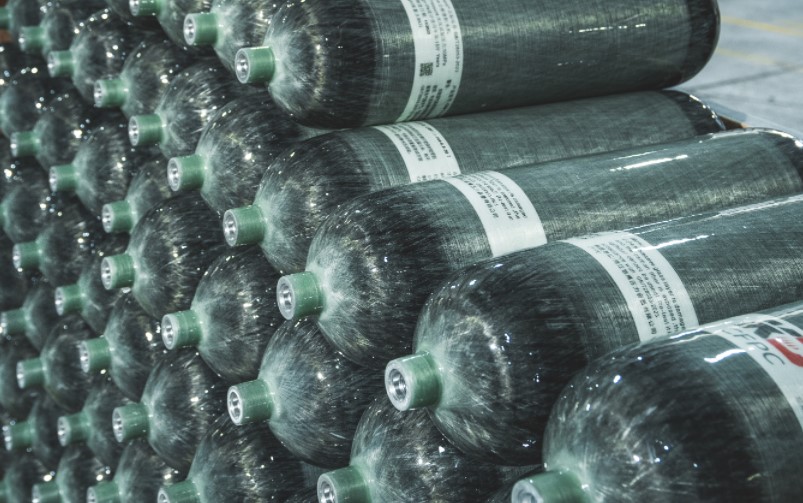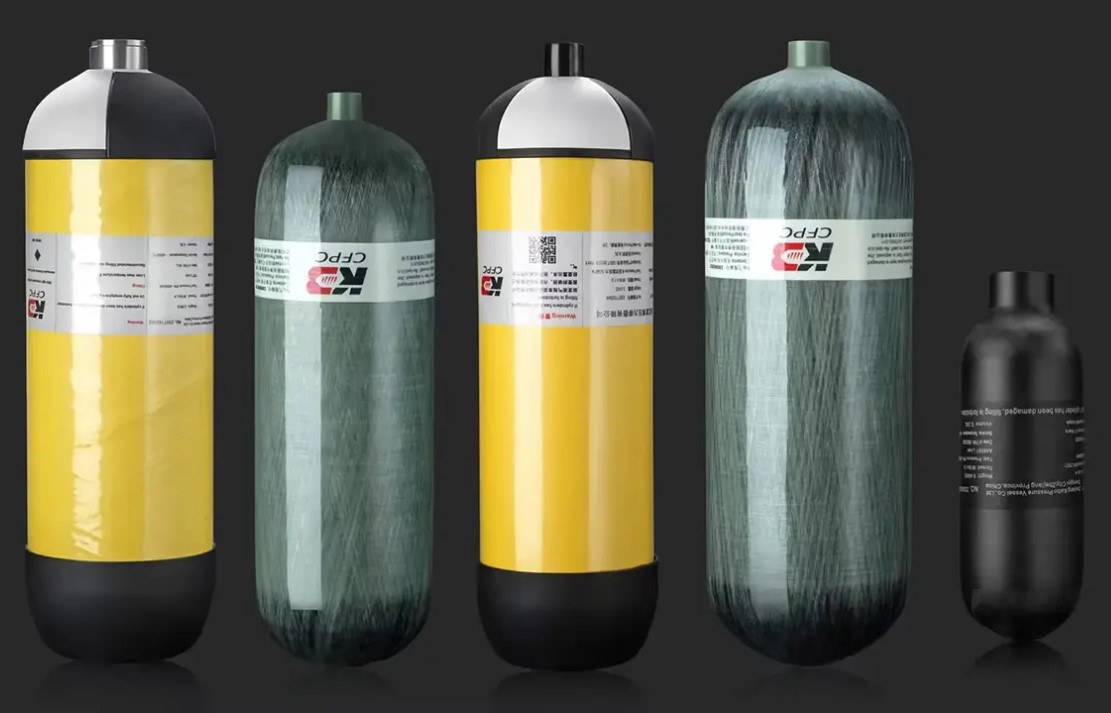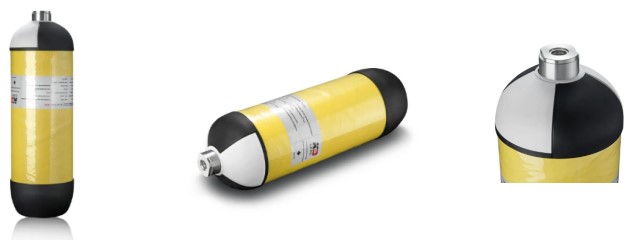Introduction
In recent years, there has been a noticeable shift within firefighting departments, emergency services, and SCBA (Self-Contained Breathing Apparatus) users towards the adoption of Type-4 carbon fiber cylinders, gradually replacing the earlier Type-3 composite cylinders. This shift is not abrupt but reflects a broader trend grounded in weight reduction, operational efficiency, and long-term cost-effectiveness.
This article takes a detailed and practical look at the reasons behind this movement, explaining the differences between the two types of cylinders, the benefits offered by Type-4 technology, and the factors that departments and suppliers consider when making the transition.
Understanding Type-3 vs. Type-4 Carbon Fiber Cylinders
Type-3 Cylinders
-
Structure: Type-3 cylinders consist of an aluminum alloy inner liner (typically AA6061) fully wrapped with layers of carbon fiber composite.
-
Weight: These are significantly lighter than steel cylinders but still have noticeable weight due to the aluminum liner.
-
Durability: The aluminum liner provides a solid internal structure, making Type-3 cylinders highly durable in demanding environments.
Type-4 Cylinders
-
Structure: Type-4 cylinders feature a plastic (polymer-based) liner, also fully wrapped with carbon fiber or a combination of carbon and glass fibers.
-
Weight: They are even lighter than Type-3 cylinders, sometimes by up to 30% less, which is a key advantage.
-
Gas Barrier: The plastic liner needs additional treatment or barrier layers to effectively prevent gas permeation.
Why Firefighting Bureaus and SCBA Users Are Switching to Type-4
1. Weight Reduction and User Fatigue
Firefighters operate in high-stress, physically intense conditions. Every gram counts when carrying equipment. Type-4 cylinders, being the lightest among the options, reduce physical strain, especially during long-duration missions or in confined spaces.
-
Less weight equals better mobility.
-
Lower fatigue contributes to higher safety and efficiency.
-
Especially useful for smaller or older personnel, or those involved in extended rescue operations.
2. Increased Gas Volume for Same or Less Weight
Due to the lower mass of Type-4 cylinders, it’s feasible to carry higher water volume (e.g., 9.0L instead of 6.8L) without increasing the load. This means more breathing time in critical situations.
-
Helpful in deep-entry rescues or high-rise firefighting.
-
Extended air duration reduces the need for frequent cylinder swaps.
3. Better Ergonomics and SCBA Compatibility
Modern SCBA systems are being redesigned to fit lighter Type-4 cylinders. The overall center of gravity and balance of the gear improves when using lighter cylinders, resulting in better posture and reduced back strain.
-
Improves overall user comfort and control.
-
Compatible with newer modular SCBA systems being adopted in North America, Europe, and parts of Asia.
Cost, Durability, and Considerations
1. Initial Cost vs. Lifecycle Savings
-
Type-4 cylinders are more expensive upfront than Type-3, mainly due to advanced materials and complex manufacturing.
-
However, savings in the long term come from:
-
Lower transport costs
-
Less user injury and fatigue
-
Extended operational time per tank
-
2. Service Life and Retesting Intervals
-
Type-3 usually has a service life of 15 years, depending on local standards. Type-4 cylinder‘s life service span is NLL(No-Limited-Lifespan).
-
Hydrostatic testing intervals (often every 5 years) are similar, but Type-4 may require closer visual inspections to detect any potential delamination or liner-related issues.
3. Gas Permeation Concerns
-
Type-4 cylinders may have slightly higher gas permeation rates due to their plastic liners.
-
However, modern barrier coatings and liner materials have largely mitigated this, making them safe for breathing air applications when built to standards like EN12245 or DOT-CFFC.
Adoption Trends by Region
-
North America: Fire departments in the U.S. and Canada are gradually integrating Type-4 cylinders, particularly in urban departments.
-
Europe: Strong push due to EN standard compliance and ergonomics focus in northern and western European nations.
-
Asia: Japan and South Korea are early adopters of lightweight SCBA systems. China’s growing industrial safety market is also showing signs of transition.
-
Middle East & Gulf: With a focus on rapid-response units and high-heat environments, Type-4 cylinders’ lightweight and corrosion resistance are attractive.
-
CIS Region: Traditionally Type-3 dominant, but with modernization programs in place, Type-4 trials are underway.
Maintenance and Storage Differences
-
Type-4 cylinders should be protected from UV exposure when not in use, as polymers can degrade over time with long-term sunlight exposure.
-
Regular inspection should include checking the external wrap and valve seat for signs of wear or damage.
-
Same hydro testing equipment and procedures are typically used as with Type-3, though always follow the manufacturer’s inspection and testing guidelines.
Final Thoughts
The shift from Type-3 to Type-4 carbon fiber cylinders in the firefighting and SCBA sectors is a logical step forward driven by weight concerns, efficiency gains, and ergonomic improvements. While the cost of adoption can be a factor, many organizations are recognizing the long-term benefits of transitioning to newer, lighter technology.
For frontline professionals whose safety and endurance depend on their equipment, the improved performance, reduced fatigue, and modern integration potential of Type-4 cylinders make them a valuable upgrade in life-critical missions.
Post time: Jul-30-2025




